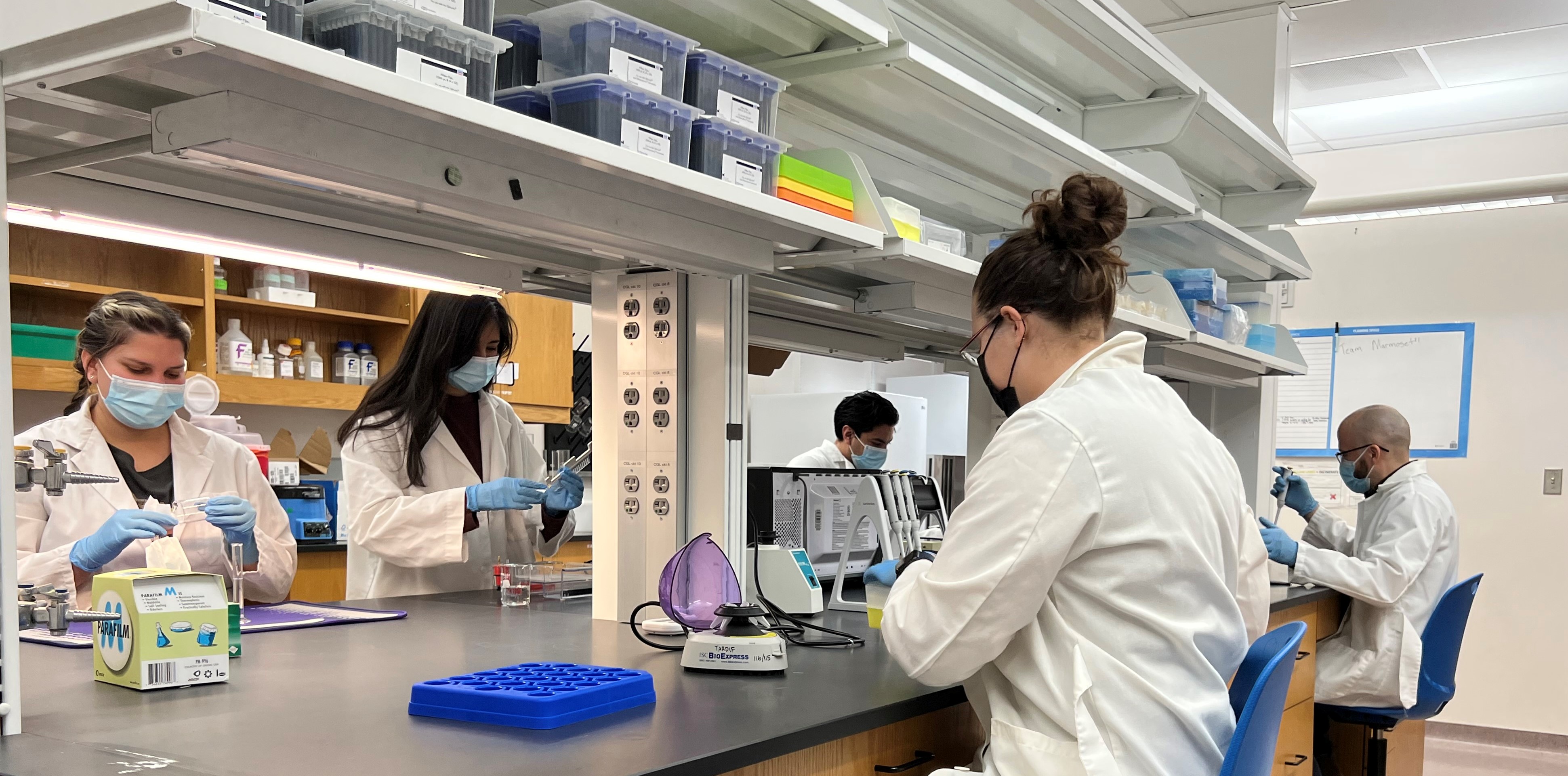
RESEARCH
Research Areas
Marmosets
Marmosets are small South American primates from the family Callitrichidae. The common marmoset (Callithrix jacchus) are currently endemic to Brazil. On average, marmosets weigh about 350g and are the size of a typical North American grey squirrel. Marmosets are unique among primates because they give birth regularly to fraternal twins, and typically maintain monogamous pair bonds. Marmosets are of interest for researchers both as a biomedical model for human health and disease, and as unique primates with unusual patterns of mating, pair bond maintenance, infant development and parental care.
Marmoset Aging
Marmosets are short-lived in comparison to other primates. On average marmosets live 4-6 years in both captivity and in the wild. Due to their rapid development and relatively short life span they are of particular interest to those interested in biomedical translational medicine. Can we begin to identify markers and traits that differentiate animals that will live long healthy lives versus those that will age poorly? How can we increase the health span of individuals such that they are living long independent lives?
Marmoset Chimerism
Marmosets have been known for decades to be unique among mammals because the placenta fuses during early development allowing exchange between the developing fraternal twins. This exchange of stem cells results in each individual being a chimera (mixture) with its twin. We have found that chimerism is very idiosyncratic with some individuals having tissues that have the genome of themselves and their twin while in other cases there is almost no exchange of genetic information. This is an area of great interest because we do not understand the mechanisms that allow the infants to develop normally, or whether there are long-term health consequences of chimerism.
Marmoset Development
A primate that gives birth to litters, and was once considered to be an obligate twinner, offers the opportunity to develop and answer questions relating to the nature vs nurture debate that cannot be asked (easily) in any other primate. Our studies focus on early infant development of feeding and activity patterns and overall development of obesity. We are also interested in how placental structure and genetic activity influence lifelong survival and reproduction. Finally, we are interested in questions relating to how temperament shapes infant development.
Lab Methods
Our laboratory currently employs the following methods:
Behavioral Observation
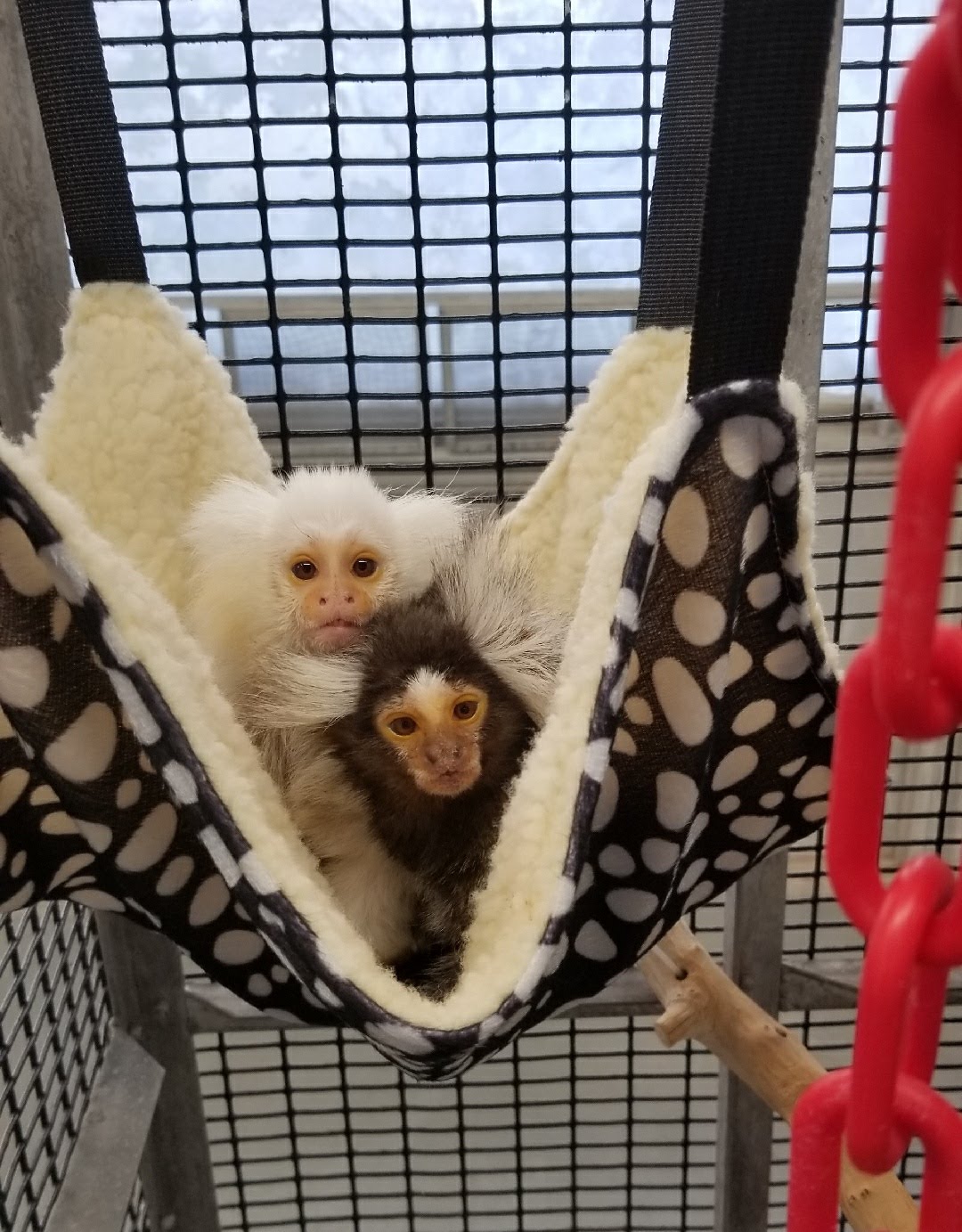 Live animal observations are obtained using instantaneous focal sampling. During observation, we are particularly interested in examining ambulatory and social behaviors to determine whether aged animals have mobility impairments or reduced sociality.
Live animal observations are obtained using instantaneous focal sampling. During observation, we are particularly interested in examining ambulatory and social behaviors to determine whether aged animals have mobility impairments or reduced sociality.
Cognitive testing
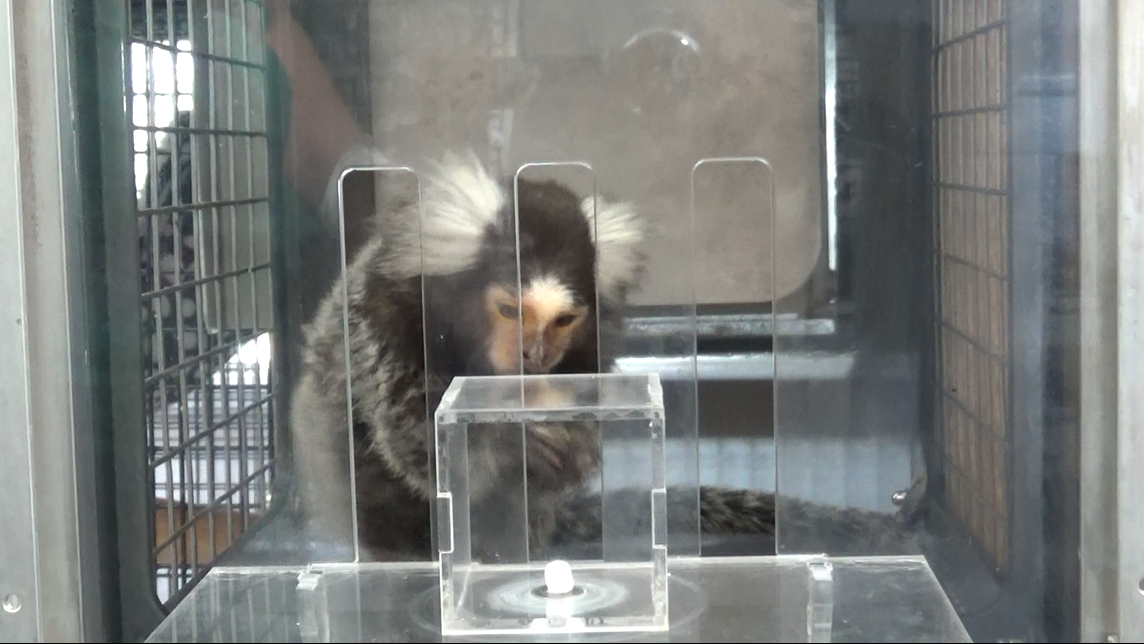
In order to determine whether aging impairs cognitive function (particularly executive function) in marmosets we have modified a number of manipulable tasks. Positive reinforcement and food rewards are used to train the animals to participate.
Ambulatory testing
![]() We have developed modified a number of methods from rodent research and human gait analyses to evaluate ambulatory function in aging marmosets. Some examples are the use of the Noldus Catwalk device, and the use of actimeters to measure daily activity.
We have developed modified a number of methods from rodent research and human gait analyses to evaluate ambulatory function in aging marmosets. Some examples are the use of the Noldus Catwalk device, and the use of actimeters to measure daily activity.
Microbiome testing
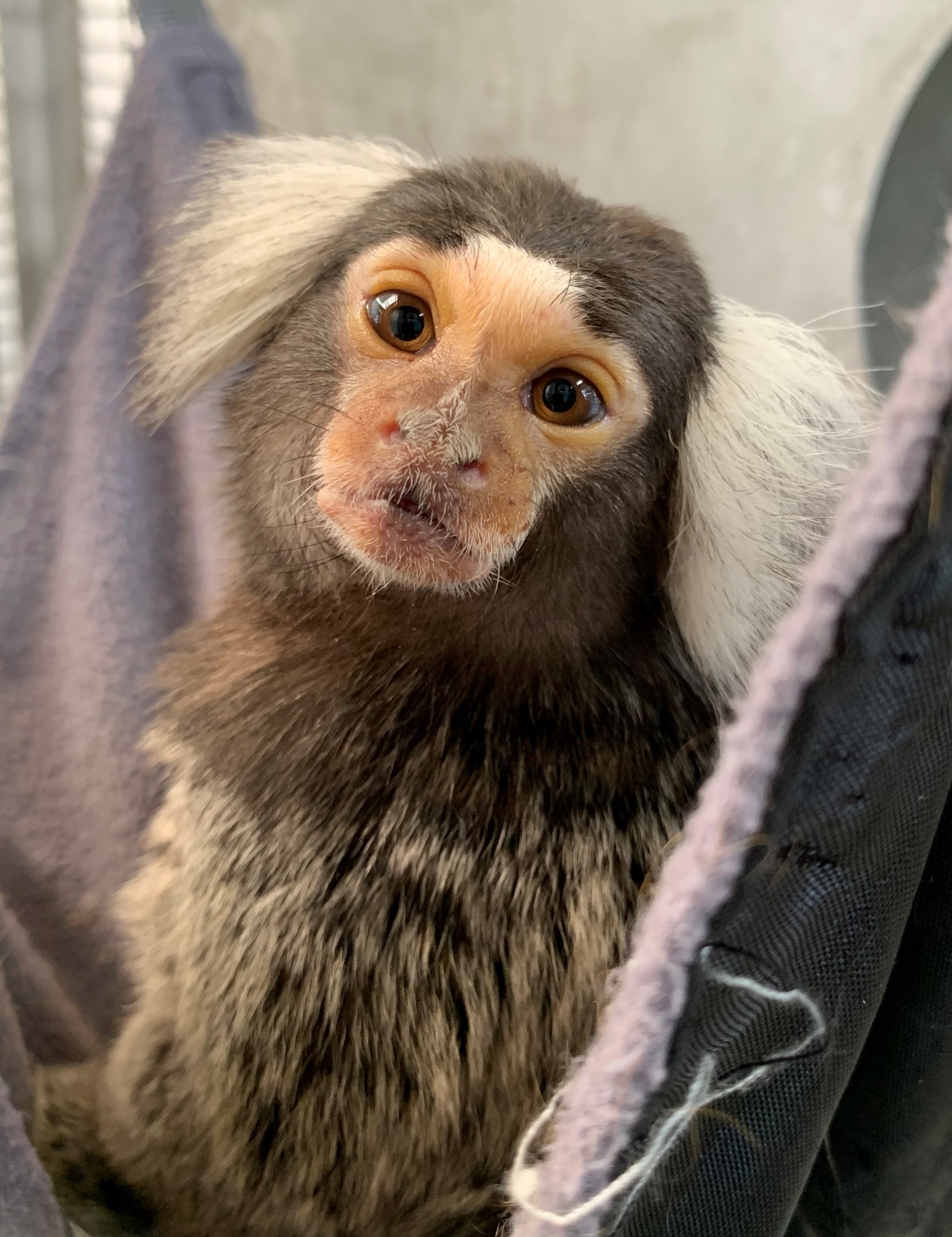 The loss of microbiome diversity, in particular gut microbial diversity, has been associated with a number of human diseases including frailty and dementia. Marmoset gut microbiome diversity is assessed by evaluating fresh fecal samples.
The loss of microbiome diversity, in particular gut microbial diversity, has been associated with a number of human diseases including frailty and dementia. Marmoset gut microbiome diversity is assessed by evaluating fresh fecal samples.
Physiology: blood pressure, ultrasound, respirometry, metabolism
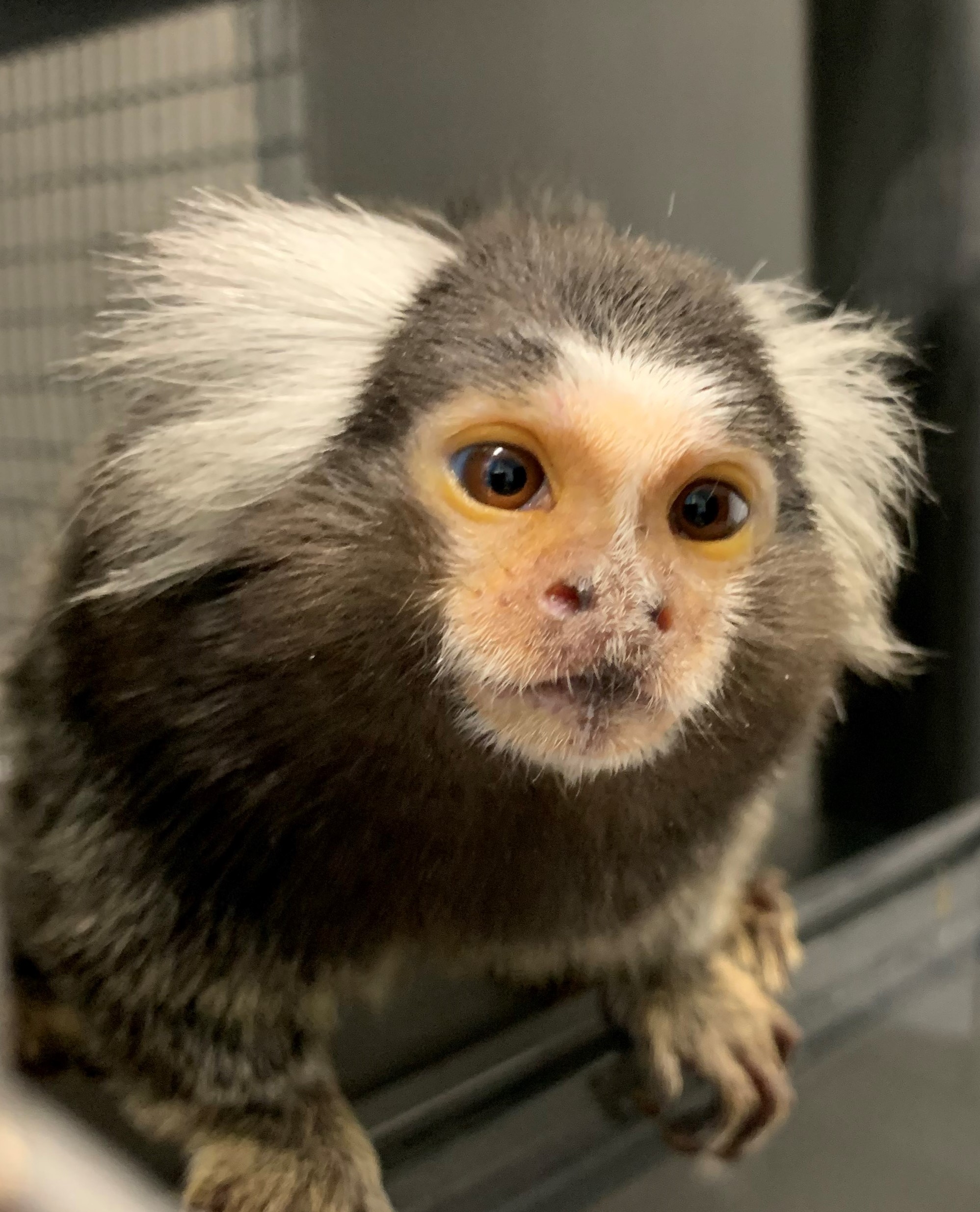 A number of tools have been developed to assess the physiological health of the animals. Blood pressure, ultrasound, body composition, and metabolism can all be assessed through noninvasive unsedated techniques.
A number of tools have been developed to assess the physiological health of the animals. Blood pressure, ultrasound, body composition, and metabolism can all be assessed through noninvasive unsedated techniques.
